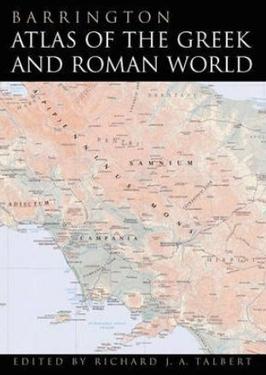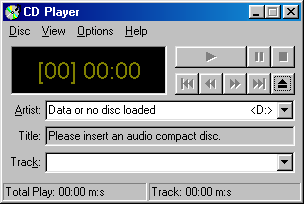A disk image is a snapshot of a storage device's structure and data typically stored in one or more computer files on another storage device.

FishBase is a global species database of fish species. It is the largest and most extensively accessed online database on adult finfish on the web. Over time it has "evolved into a dynamic and versatile ecological tool" that is widely cited in scholarly publications.
In information technology, a backup, or data backup is a copy of computer data taken and stored elsewhere so that it may be used to restore the original after a data loss event. The verb form, referring to the process of doing so, is "back up", whereas the noun and adjective form is "backup". Backups can be used to recover data after its loss from data deletion or corruption, or to recover data from an earlier time. Backups provide a simple form of IT disaster recovery; however not all backup systems are able to reconstitute a computer system or other complex configuration such as a computer cluster, active directory server, or database server.
Multi Emulator Super System (MESS) was an emulator for various consoles and computer systems, based on the MAME core. It used to be a standalone program, but is now integrated into MAME . MESS emulated portable and console gaming systems, computer platforms, and calculators. The project strived for accuracy and portability and therefore was not always the fastest emulator for any one particular system. Its accuracy made it also useful for homebrew game development.
Peter Pin-Shan Chen is a Taiwanese-American computer scientist. He is a (retired) distinguished career scientist and faculty member at Carnegie Mellon University and Distinguished Chair Professor Emeritus at LSU. He is known for the development of the entity–relationship model in 1976.

Survivor Corps, formerly known as the Landmine Survivors Network, was a global network of survivors helping survivors to recover from war, rebuild their communities, and break cycles of violence. The organization operated programs in Albania, Armenia, Azerbaijan, Bosnia-Herzegovina, Burundi, Colombia, Croatia, El Salvador, Ethiopia, Georgia, Jordan, Kosovo, Macedonia, Montenegro, Serbia, Uganda, Rwanda, the United States and Vietnam.

PhotoRec is a free and open-source utility software for data recovery with text-based user interface using data carving techniques, designed to recover lost files from various digital camera memory, hard disk and CD-ROM. It can recover the files with more than 480 file extensions . It is also possible to add custom file signature to detect less known files.

ActiveMovie was the immediate ancestor of Windows Media Player 6.x, and was a streaming media technology now known as DirectShow, developed by Microsoft to replace Video for Windows. ActiveMovie allows users to view media streams, whether distributed via the Internet, an intranet or CD-ROMs.

The Barrington Atlas of the Greek and Roman World is a large-format English language atlas of ancient Europe, Asia, and North Africa, edited by Richard J. A. Talbert. The time period depicted is roughly from archaic Greek civilization through Late Antiquity. The atlas was published by Princeton University Press in 2000. The book was the winner of the 2000 Association of American Publishers Award for Best Professional/Scholarly Multivolume Reference Work in the Humanities.
The US National Virtual Observatory'-NVO- was conceived to allow scientists to access data from multiple astronomical observatories, including ground and space-based facilities, through a single portal. Originally, the National Science Foundation (NSF) funded the information technology research that created the basic NVO infrastructure through a multi-organization collaborative effort. The NVO was more than a “digital library”; it was a vibrant, growing online research facility akin to a bricks-and-mortar observatory for professional astronomers.
Reference software is software which emulates and expands upon print reference forms including the dictionary, translation dictionary, encyclopaedia, thesaurus, and atlas. Like print references, reference software can either be general or specific to a domain, and often includes maps and illustrations, as well as bibliography and statistics. Reference software may include multimedia content including animations, audio, and video, which further illustrate a concept. Well designed reference software improves upon the navigability of print references, through the use of search functionality and hyperlinks.
Research data archiving is the long-term storage of scholarly research data, including the natural sciences, social sciences, and life sciences. The various academic journals have differing policies regarding how much of their data and methods researchers are required to store in a public archive, and what is actually archived varies widely between different disciplines. Similarly, the major grant-giving institutions have varying attitudes towards public archiving of data. In general, the tradition of science has been for publications to contain sufficient information to allow fellow researchers to replicate and therefore test the research. In recent years this approach has become increasingly strained as research in some areas depends on large datasets which cannot easily be replicated independently.

CD Player is a computer program that plays audio CDs using the computer's sound card. It was included in Windows 95, Windows 98, Windows NT 3.51, Windows NT 4.0 and Windows 2000. It was removed from Windows ME and beyond in favor of "CD/DVD playback functionality" in Windows Media Player.
The OpenSIGLE repository provides open access to the bibliographic records of the former SIGLE database. The creation of the OpenSIGLE archive was decided by some major European STI centres, members of the former European network EAGLE for the collection and dissemination of grey literature. OpenSIGLE was developed by the French INIST-CNRS, with assistance from the German FIZ Karlsruhe and the Dutch Grey Literature Network Service (GreyNet). OpenSIGLE is hosted on an INIST-CNRS server at Nancy. Part of the open Access movement, OpenSIGLE is referenced by the international Directory of Open Access Repositories.
ProQuest Dissertations and Theses (PQDT) is an online database that indexes, abstracts, and provides full-text access to dissertations and theses. The database includes over 2.4 million records and covers 1637 to the present. It is produced by ProQuest and was formerly known as ProQuest Digital Dissertations. The bibliographic database is known as Dissertation Abstracts or Dissertation Abstracts International.

The Underwater Archaeology Branch (UAB) of the Naval History & Heritage Command (NHHC) is a unit of the United States Department of the Navy. It was formally founded in 1996 as a consequence of the emerging need to manage, study, conserve, and curate the U.S. Navy's submerged cultural resources.

The Center for International Stabilization and Recovery (CISR), formerly the Mine Action Information Center (MAIC), is a public policy center at James Madison University that manages information, conducts training, holds conferences and workshops, and performs research relevant to humanitarian mine clearance, victim assistance, mine risk reduction and other explosive remnants of war (ERW).

The Hong Kong University of Science and Technology Library is housed in the Lee Shau Kee Library, located at the Hong Kong University of Science and Technology. It has over 1 million books, 728,426 printed volumes, 754,146 in electronic format, as well as tens of thousands of e-journals, and streaming audio and video collections. A good part of its special collections, like its Antique Maps of China Collection has been digitized.
Data preservation is the act of conserving and maintaining both the safety and integrity of data. Preservation is done through formal activities that are governed by policies, regulations and strategies directed towards protecting and prolonging the existence and authenticity of data and its metadata. Data can be described as the elements or units in which knowledge and information is created, and metadata are the summarizing subsets of the elements of data; or the data about the data. The main goal of data preservation is to protect data from being lost or destroyed and to contribute to the reuse and progression of the data.








